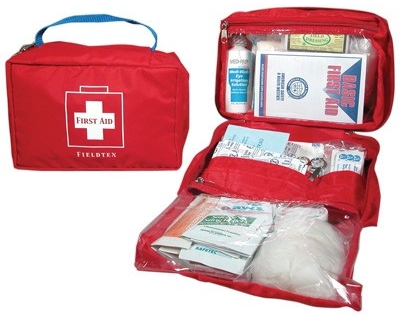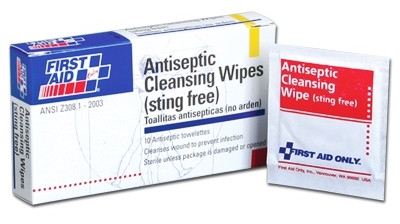What Everyone Should See in Your First Aid Kit
You need to be prepared for accidents and injuries in your workplace, and a well-equipped first aid kit is essential for such circumstances. As a matter of fact, having a first aid kit in your facility is part of the law!
The Occupational Safety and Health Administration (OSHA) lays out the “minimally acceptable” number and type of first aid accessories required according to OSHA 1910.266 App A. That in mind, we’ve prepared a simple list of the right materials you should fill your first aid kit with. Follow these guidelines, and be prepared for anything!
1. Gauze Pads
Sterile gauze pads are highly useful in many situations: covering up scrapes, burns and cuts; sopping up blood; and protecting open wounds from infection. Prepare sets of at least 4″W x 4″H and 8″W x 10″H pads. Triangular bandages are also useful for dealing with broken or fractured limbs. OSHA regulations call for at least two of those in your kit.
2. Adhesive/Elastic Bandages and Tapes
Adhesive bandages and tapes fill a number of useful roles. Bandages can keep wounds from reopening, prevent infection or contamination, and maintain compression to staunch bleeding. Tapes, on the other hand, can hold bandages and gauze pads in place. Keep roll bandages of at least 2″W available in your first aid kit as well as a box of short bandages best known as Band-Aid-type bandages.
3. Antiseptic Wipes and Cleaning Agents
Disinfecting a wound is one of the first steps in any first aid procedure. One of the most convenient tools for this is the antiseptic cleansing wipe. These treated towelettes can both disinfect and clean a wound quickly. Additional cleansing agents such as isopropyl alcohol can further disinfect larger or more serious wounds.
4. Towels, Tweezers and Tools
A variety of specialized tools are also needed to make treating a wound easier. Use medical scissors to cut bandages and tapes quickly. Tweezers can remove small splinters or debris from wounds. Splints can set broken bones and prevent unnecessary movement. Towels or blankets can sop up fluids, dry out victims, and keep them warm. Resuscitation gear such as breathers can help with cardiopulmonary resuscitation (CPR) and save lives.
5. Information on First Aid Procedures and Emergency Aid
Information and training can save lives and prevent injuries. That’s why it’s paramount to keep your workers adequately trained in employing standard first aid procedures and knowing where to find emergency contact information. Use pamphlets, training sessions, and preventive training to ensure your workers know what to do when called upon.
These tools and supplies are just the bare minimum of what’s needed to supply a first aid kit, according to OSHA. For specialized jobs or duties, more specifically equipped kits may be necessary. Check with your local authorities and compliance officers to find out exactly what you need to ensure your facility’s safety!
###
Connect with Joshua Tolentino on Google+
Editor’s Note: What supplies do you keep in your first aid kits? We’d love to hear from you!






